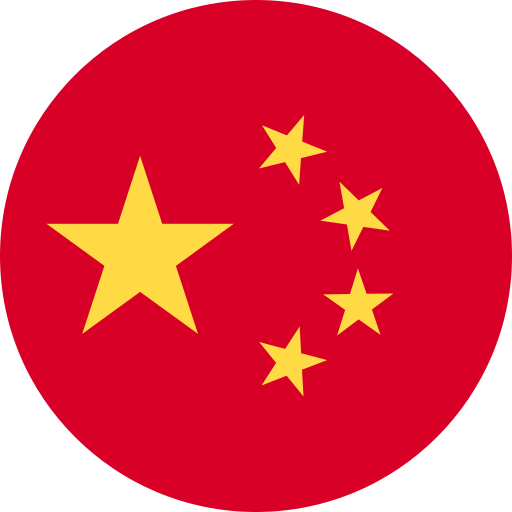Key Takeaways
- Distinct Language Branches: Cantonese and Mandarin are separate branches of the Chinese language family, each with unique characteristics and cultural significance.
- Tonal Complexity: Cantonese has a more complex tonal system (six to nine tones) compared to Mandarin’s four main tones, allowing for nuanced expression in communication.
- Vocabulary Variations: Common words differ significantly between the two languages, highlighting the cultural influences embedded within their usage (e.g., “I” is “ngóh” in Cantonese and “wǒ” in Mandarin).
- Grammatical Differences: While both languages follow a Subject-Verb-Object structure, Cantonese allows for more flexible word order and employs unique final particles that add emotional context to statements.
- Cultural Expressions: Regional expressions and idioms reflect distinct cultural values, with Cantonese emphasizing communal dining while Mandarin often draws from philosophical concepts.
- Historical Contexts: The origins of each language reveal how historical developments shaped current usage, influencing vocabulary, pronunciation, and overall communication styles.
Ever wondered why Cantonese and Mandarin sound so different, even though they share the same roots? Comparing word usage in Cantonese and Mandarin reveals fascinating insights into culture, history, and communication styles. Each language has its own unique vocabulary and expressions that reflect the diverse experiences of its speakers.
Overview of Cantonese and Mandarin
Cantonese and Mandarin represent two distinct branches of the Chinese language family, each with unique characteristics. Cantonese primarily thrives in Hong Kong and southern China, while Mandarin dominates as the official language of China and Taiwan.
Cantonese features six to nine tones, creating a rich tapestry of sound. This tonal complexity allows for nuanced expression but can present challenges for learners. In contrast, Mandarin has four main tones, making it relatively simpler in terms of pronunciation.
Vocabulary differences also play a significant role in distinguishing these languages. Common words may vary considerably between Cantonese and Mandarin. For example, the word for “I” is “ngóh” in Cantonese and “wǒ” in Mandarin. These variations reflect not only linguistic diversity but also cultural nuances within communities.
When it comes to written forms, both languages utilize Chinese characters; however, regional preferences exist regarding simplified versus traditional characters. Simplified characters are more common in mainland China (Mandarin), while traditional characters prevail in Hong Kong (Cantonese).
Understanding these elements enhances your appreciation for how speakers communicate their thoughts and emotions through different word choices and structures. Whether you’re exploring voiceover opportunities or engaging with native speakers directly, recognizing these distinctions enriches your experience with both languages.
Historical Context
Cantonese and Mandarin, though both part of the Chinese language family, have rich historical backgrounds that shape their current usage. These histories offer insights into the linguistic evolution and cultural significance of each language.
Origins of Cantonese
Cantonese traces its roots back to the Tang Dynasty (618-907 AD), developing in the Guangdong province and surrounding areas. This region’s trade connections influenced the vocabulary, incorporating elements from various languages due to interactions with foreign merchants. The distinct sounds of Cantonese emerged from a complex blend of dialects, leading to its unique tonal structure. With six to nine tones, Cantonese allows for expressive communication that reflects local traditions and customs.
Origins of Mandarin
Mandarin originated during the Yuan Dynasty (1271-1368) as a lingua franca among diverse ethnic groups across China. Its adoption expanded significantly under subsequent dynasties, eventually becoming standardized as Putonghua in the 20th century. The transition toward using simplified characters in mainland China further shaped Mandarin’s development, aiming for broader accessibility. As an official language today, Mandarin serves as a unifying force within China’s vast linguistic landscape while continuing to evolve alongside cultural changes.
Understanding these historical contexts enriches your appreciation for how Cantonese and Mandarin differ not just in vocabulary but also in their reflections of society over time.
Phonetic Differences
Cantonese and Mandarin exhibit notable phonetic differences that influence their sound and pronunciation. Understanding these variations enhances your appreciation of each language’s unique character.
Tone Variations
Cantonese is known for its complex tonal structure, featuring six to nine distinct tones depending on the dialect spoken. Each tone conveys a different meaning, making it crucial for effective communication. For example, the syllable “ma” can mean “mother,” “hemp,” or “horse,” depending on the tone used. In contrast, Mandarin employs four main tones plus a neutral tone, simplifying tonal distinctions. This difference impacts how speakers express themselves; Cantonese allows for greater nuance in emotional expression through its rich tonal palette.
Pronunciation Patterns
Pronunciation patterns between Cantonese and Mandarin also show significant divergence. Cantonese tends to have more final consonant sounds than Mandarin, which primarily ends syllables with vowels or nasals. For instance, words in Cantonese can end with sounds like “-p,” “-t,” or “-k.” Conversely, Mandarin often eliminates these endings for smoother syllable transitions. Additionally, certain initial consonants differ; while both languages might use a sound represented by “ch” in English, how it’s articulated varies between them—creating distinct auditory experiences when spoken.
These phonetic differences not only shape how each language sounds but also reflect cultural nuances embedded within their usage and evolution over time.
Vocabulary Comparison
Cantonese and Mandarin exhibit noteworthy differences in vocabulary, reflecting their unique cultural contexts.
Common Words in Cantonese
Cantonese features several common words that differ from Mandarin. For instance, the word for “I” is “我” (ngó) in Cantonese, whereas it’s “我” (wǒ) in Mandarin. In daily conversations, you might hear “食飯” (sihk faan) meaning “to eat,” compared to the Mandarin phrase “吃饭” (chī fàn). Additionally, the term for “thank you” varies: Cantonese speakers use “唔該” (m̀hgōi), while Mandarin speakers say “谢谢” (xièxiè). These variations highlight how cultural practices influence language usage.
Common Words in Mandarin
Mandarin also has its set of distinctive terms. The word for “you” is “你” (nǐ) in Mandarin, contrasting with the Cantonese equivalent “你” (néih). When discussing food, a simple phrase like “喝水” (hē shuǐ), which means “to drink water,” stands out against its Cantonese counterpart “飲水” (yám séui). Furthermore, expressions of gratitude differ again; while you’d say “谢谢” (xièxiè) in Mandarin, it’s important to recognize how this reflects societal norms around politeness.
Understanding these vocabulary differences not only enhances communication but also enriches your appreciation for each language’s unique identity and cultural significance.
Grammatical Structures
Cantonese and Mandarin exhibit distinct grammatical structures that influence how speakers construct sentences. These differences reveal insights into each language’s unique characteristics.
Sentence Formation
Sentence formation in Cantonese often follows a Subject-Verb-Object (SVO) structure, similar to Mandarin. However, Cantonese incorporates more flexibility regarding word order, allowing for variations based on emphasis or context. For instance, you might encounter questions structured with the verb preceding the subject in Cantonese. In contrast, Mandarin maintains stricter adherence to SVO order for clarity and formality.
Use of Particles
Particles play a crucial role in both languages but function differently. Cantonese employs various final particles such as “啦” (laa) or “嘅” (ge3) to convey tone and emotion, adding layers of meaning to statements. These particles can indicate certainty, suggestion, or inquiry depending on their use within conversation. Mandarin also utilizes particles like “吗” (ma) for yes/no questions and “了” (le) for completed actions; however, they do not carry the same emotional weight as those in Cantonese.
Understanding these grammatical structures enhances your appreciation for how each language operates and enriches communication experiences across cultural contexts.
Cultural Influence on Language
Cultural influences play a significant role in shaping the languages of Cantonese and Mandarin. Each language reflects the unique experiences, values, and traditions of its speakers.
Regional Expressions
Regional expressions illustrate how culture affects language usage. In Cantonese-speaking areas like Hong Kong, you’ll encounter phrases that resonate with local customs and social contexts. For example, “食飯” (sihk faan) literally means “to eat rice,” but it often implies sharing a meal with family or friends, highlighting the importance of communal dining in Cantonese culture.
Conversely, Mandarin regions embrace expressions that reflect their own cultural nuances. The phrase “吃饭” (chī fàn) also means “to eat,” yet it doesn’t carry the same connotation of togetherness as its Cantonese counterpart. This divergence emphasizes how regional practices influence word choices.
Idiomatic Differences
Idiomatic differences further showcase cultural variation between these two languages. Cantonese idioms often draw from local history and folklore. For instance, “唔該” (m̀hgōi), meaning “thank you,” embodies a sense of politeness deeply rooted in community respect.
Mandarin employs idioms rich in philosophical concepts drawn from Confucianism and Daoism. Expressions like “谢谢” (xièxiè) serve not only as gratitude but also reflect broader societal values around harmony and relationships.
These idiomatic variations enrich communication by offering insights into each culture’s worldview while demonstrating how language evolves alongside its speakers’ experiences and beliefs.
Conclusion
Exploring word usage in Cantonese and Mandarin reveals the rich tapestry of linguistic diversity within Chinese culture. Each language offers a unique lens through which you can appreciate not just communication but also the underlying social and historical contexts.
Understanding these differences enhances your ability to connect with speakers of both languages while deepening your appreciation for their distinct identities. Whether you’re learning one of these languages or simply curious about their nuances, recognizing how vocabulary, grammar, and cultural influences shape expression can significantly enrich your experience. Embracing this complexity opens doors to better conversations and meaningful connections across cultures.
Frequently Asked Questions
What are the main differences between Cantonese and Mandarin?
Cantonese and Mandarin differ in tonal systems, vocabulary, pronunciation, and grammar. Cantonese has a complex tonal system with six to nine tones, while Mandarin has four. Each language also features distinct vocabulary reflecting cultural nuances. Additionally, Cantonese allows for more flexible sentence structures compared to the stricter SVO format of Mandarin.
Where are Cantonese and Mandarin primarily spoken?
Cantonese is mainly spoken in Hong Kong and southern China, while Mandarin serves as the official language of China and Taiwan. These geographical distinctions highlight their cultural contexts and influence on communication styles.
How do tones affect communication in these languages?
Tones play a crucial role in both languages. Cantonese employs a more intricate tonal system that allows for nuanced expression, whereas Mandarin’s simpler tone structure makes pronunciation easier but may limit emotional depth in some contexts.
Are there significant vocabulary differences between the two languages?
Yes, there are notable vocabulary differences. For instance, “I” is “我” (ngó) in Cantonese and “我” (wǒ) in Mandarin. Such variations reflect each language’s unique cultural context and enhance understanding among speakers.
How do grammatical structures vary between Cantonese and Mandarin?
While both languages generally follow an SVO structure, Cantonese permits greater flexibility based on context or emphasis. In contrast, Mandarin adheres more strictly to this order for clarity.
What historical influences shape these languages today?
Cantonese traces its roots back to the Tang Dynasty influenced by trade connections. Conversely, Mandarin developed during the Yuan Dynasty as a lingua franca among diverse groups before becoming standardized as Putonghua in the 20th century.
How does culture impact language usage in Cantonese and Mandarin?
Cultural influences greatly shape expressions within each language; for example, communal dining is emphasized in Cantonese (“食飯”), while it lacks similar connotations in Mandarin (“吃饭”). Idioms also reflect differing philosophical backgrounds rooted in local customs.







